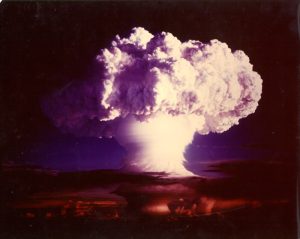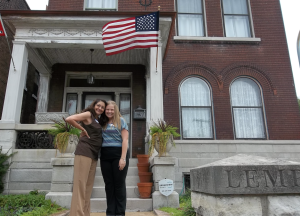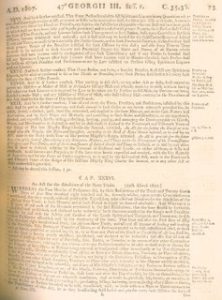
The Misleading Nature of Scientific Publications
This paper was composed as part of an honors writing intensive assignment in BIOCHM 2482H taught by Dr. Thomas J. Reilly. In the course, students were encouraged to analyze and criticize scientific publications that are often held to unrealistic standards of rigor by the public. The assignment entailed a reading of The Double Helix, which described the discovery of the structure of DNA from the perspective or Dr. James D. Watson, and then analyzing the wholly different experience depicted by this book as compared to the formal publication of the discovery in Nature. This paper explores the scientific endeavor as but one part of a web of beliefs and attitudes that constitute a social identity rather than a concept to be understood in isolation.

Science of Environmental Effects of Nuclear War
The only atomic bombs to ever be used outside of testing were those used by the United States in Hiroshima and Nagasaki to end the Second World War. These blasts exploded with the force of about 15 kilotons and 21 kilotons of TNT respectively (World Nuclear Association, 2016). The total nuclear arsenal in the world…

A War Between Two Worlds
Americans wound down Halloween 1938 gathered around their radios to hear Orson Welles read a rendition of War of the Worlds.

My Discovery of Interconnectedness
As a child, my mother would always tell me stories of my ancestors and distant relatives, but I tended to brush it off like it was not a big deal. At such a young age, my goal was not to learn or absorb information about my past; it was to live in the present. As…

A-po(pulation)-ca-lypse- The Danger of Overpopulation on the Environment Within America
Many reasons for the “apocalyptic” demise of the Mayan civilization have been hypothesized including the occurrence of a severe drought, thought to be exacerbated by rapid deforestation. Extensive logging was conducted to clear the land for growing more food and for producing construction materials needed to accommodate the growing population’s cityscape, further magnifying the environmental…

Retracing the Steps of British Abolitionists: A Digital Learning Approach to the History of the Atlantic Slave Trade
Original text example with marginal notes. The transatlantic slave trade was the largest forced migration in history. It involved an intercontinental transfer of wealth, goods, and most importantly, millions of people over the course of four centuries. Great Britain was one of the chief participants in the traffic. According to estimates available through Voyages: The…

King Arthur and His Part in the Breaking of the Round Table
Amy is an English Major and a senior at Mizzou. At the age of sixteen, she decided to drop out of high school and continue her education at a local community college. It was there that she found a passion for school and writing. She strives to learn something new every day about…

The Cultural Power of Iron in Early Africa
Iron played a central role in many societies of early Africa. It held both spiritual and material power. Physically, Africans used iron to create tools for agriculture, utensils for everyday life, and weapons for protection and conquest (Shillington, 2012, p. 45). Spiritually, Africans considered iron potent. Because of the elemental forces wielded to create iron…

Birth of a Workforce: The Blacksmiths Rise in Sub-Saharan Africa
The “Ritual Staff with Seated Nommo” made by the Dogon people from modern Mali available at the University of Missouri Museum of Art and Archeology represents the rise in specialized occupations in early Africa and demonstrates the complex techniques of…

Hannibal, MO: “America’s Hometown” Amidst Fictional Landscape
We, as humans, are continually connecting with our surroundings in an interactive manner that has a profound effect on how we move through the world subjectively and react to the landscapes we inhabit. Bonding with specific locales is natural and pronounced when each individual is able to thrive within a regional group that has historical ties to an area rich with culture, generating substantial tradition. Fundamental to this place-based connection is an understanding of the transformative nature of landscapes.